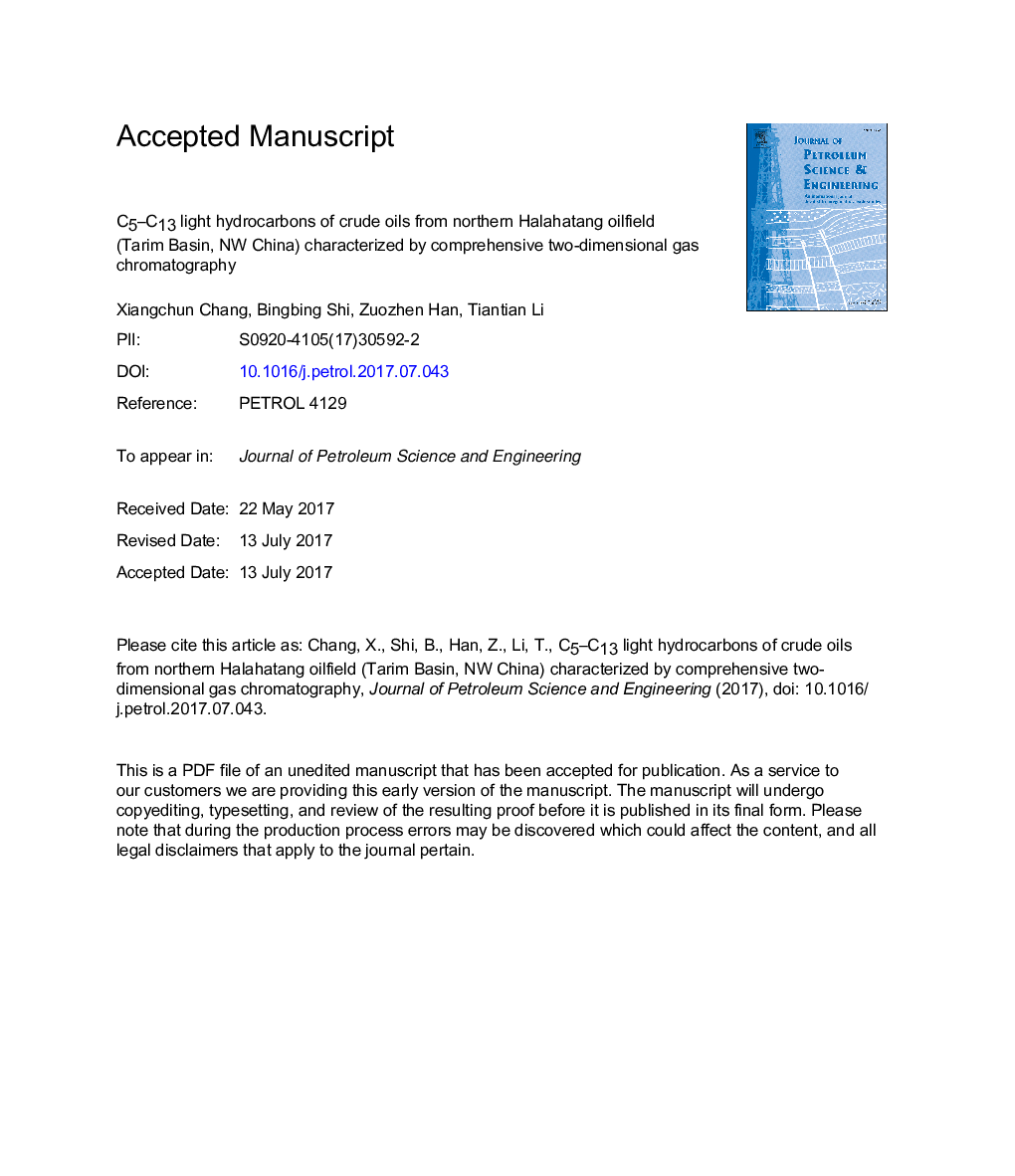| Article ID | Journal | Published Year | Pages | File Type |
|---|---|---|---|---|
| 5483945 | Journal of Petroleum Science and Engineering | 2017 | 30 Pages |
Abstract
The Halahatang Oilfield in the Tabei Uplift of the Tarim Basin has substantial petroleum potential and contains many prolific commercial oil reservoirs. In this study, a total of 15 DST oils were sampled from the northern Halahatang oilfield, and their geochemistry of C5-C13 light hydrocarbons (LHs) is characterized by two-dimensional gas chromatography (GC Ã GC). The concentrated clusters in the LH triangular diagrams and parent-daughter plots of the n-Heptane (%C7) vs. ln (Cps/CHs) corroborating with the similar K1 values (1.01-1.23), imply a high degree of compositional similarity and source affinity. The C7 LHs show a predominance of n-heptane (30.07%-42.75%) and a nearly identical abundance of MCyC6 (35.92%-45.85%), low IMCyC6 (methylcyclohexane index) value (35.92%-45.57%) and a moderate ICH (cyclohexane index) value (25.92%-45.66%), demonstrating that they were typical marine oils mainly originated from a substantial amount of sapropelic organic matter mixed with a nearly equivalent amount of humic one. The LH maturity indexes, such as the heptane (H) ratio (17.80%-29.28%), isoheptane (I) ratio (1.25-2.15), °Ctemp (113.72 °C â124.63 °C),methyladmantane index (MAI: 52.15%-63.65%) and equivalent vitrinite reflectance (1.1%-1.3% Ro) indicate a high thermal maturity. The values of 3-ethyl-2-methylheptane to 3-methylnonane (MT1: 0.91-3.65), 1,1,2,3-tetramethylcyclohexane to propylcyclohexane (MT2: 0.85-1.37), 2-methyl-3-ethylheptane/2,6-dimethyloctane (MTR: 0.59-1.25), and Pr/Ph (0.87-1.62) observed for the northern Halahatang oils consistently suggest a marine carbonate lithology for the source rock deposited in an anoxic, reducing environment. Geochemical and geological correlation imply the Halahatang oils are possibly derived from the O2+3 potential source rocks.
Keywords
Related Topics
Physical Sciences and Engineering
Earth and Planetary Sciences
Economic Geology
Authors
Xiangchun Chang, Bingbing Shi, Zuozhen Han, Tiantian Li,
